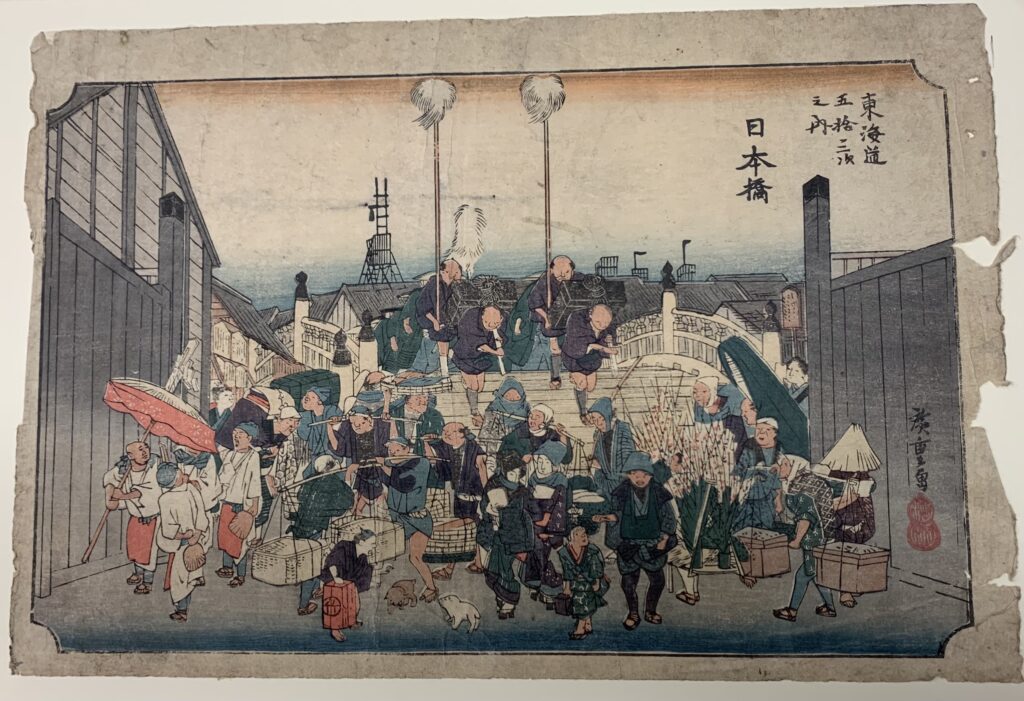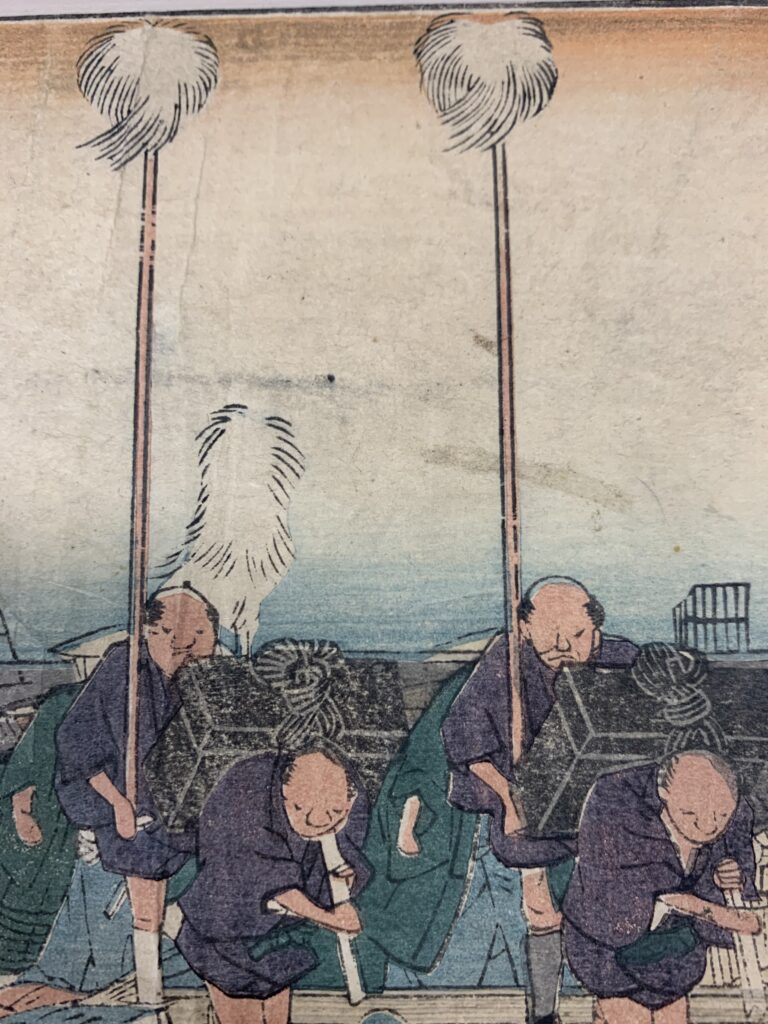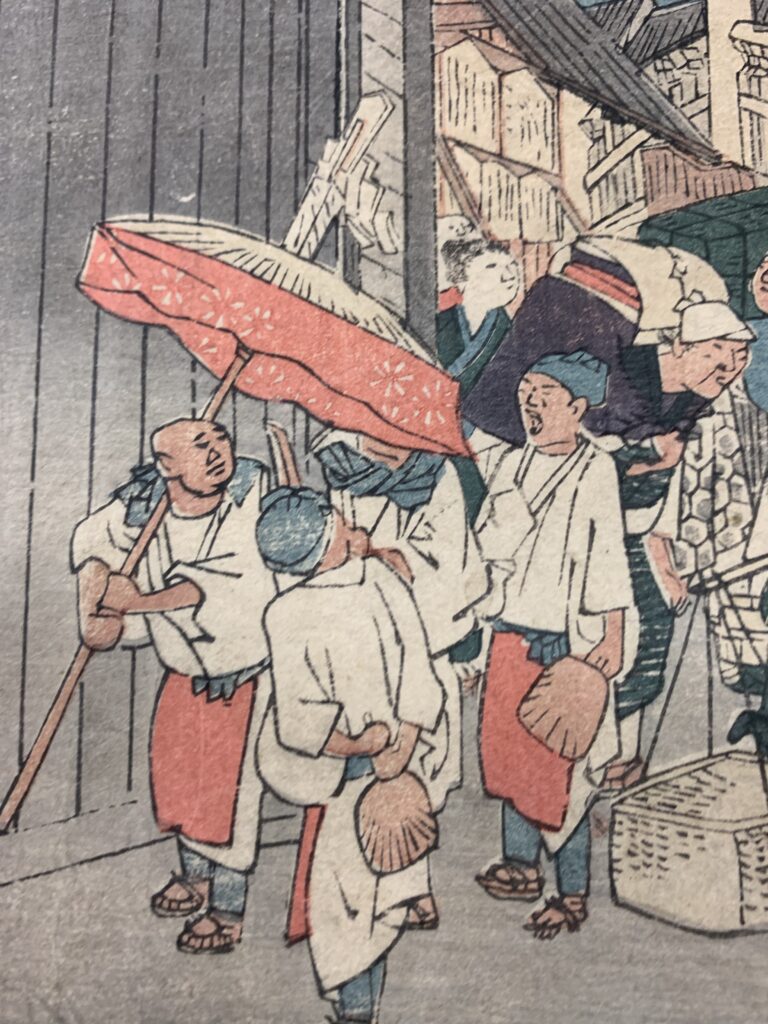


Title: ” Nihonbashi, Edo” Fifty-three Stations of the Tōkaidō
Artist: Andō Hiroshige (1797-1858)
Location: Tōkaidō
Culture: Japan
Medium: Ink on paper, Color Woodblock print
Dates: ca. 1833-1854
Dimensions: 23 x 25 cm
Collection: Louis Black Collection
Repository: Connecticut College, New London, CT
Description:
This early morning sequence of the Nihon Bridge represents a part of the liveliness that could describe a familiar day amongst one of the fifty-three stations, or rest areas, that ran from modern-day Tokyo to Kyoto. Commoners are active below the peak of the bridge in a jumbled group portraying a worker’s commute. Some walk with baskets and wares, and most of the people are wearing combinations of towels on their heads, short-sleeved shirts, and cloth of green, white, or blue coloration. On the left are a group of performers in white kimonos and red cloth aprons. On the peak of the bridge, moving in formation is the beginning of a daimyo procession, a ritual of the feudal lords during the time of Shogunate Rule. The distinction of disarray vs organization, height levels of figures in the print, and the footwear of the people (more visible in other renditions), all highlight differences in class and individuality during the Edo Period.
Comparison:
I found this piece to be very in line with typical renditions of the common Japanese city space of this era. There is only a slight separation between the commoners and the workers associated with the feudal lord, leading me to believe it is a print for common people, although I do recognize it can be argued that there does not need to be a separation with no person of power within the print. The sunrise also appears very similar to the sky separation like in “Plum Garden” by Utagawa with the three distinct planes of color. This sky is a different turn from some other works like those in the “36 Views of Mt Fuji” series, as many of them contain a greater blending of the colors in the sky rather than very distinguishable separated lines. This piece also contains a slight amount of perspective using the building walls, which in turn focuses more on the bridge and the people in the center of the image, a tactic very similar to the cityscape print by Kiyomitsu II, “Entrance to Yoshiwara street scene” as the walls of the street entrance and the depth created by the angled shops places different visual pathways to set one’s focus.
References:
Connecticut College Japanese Prints Collections inventory
Honolulu Museum of Art